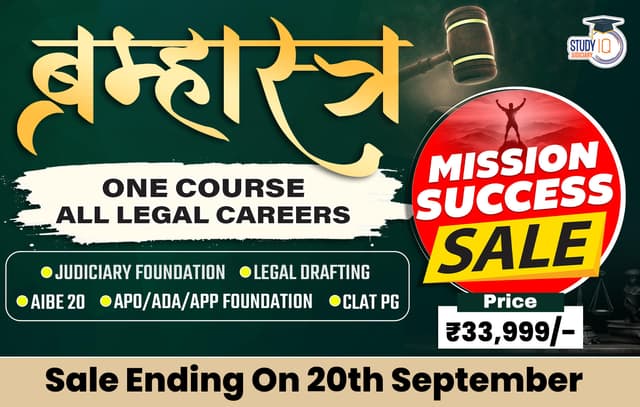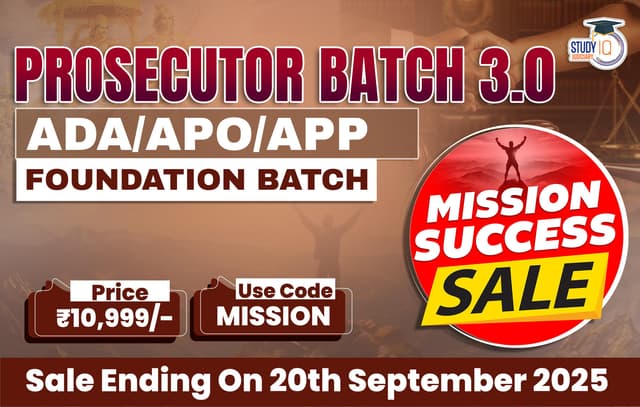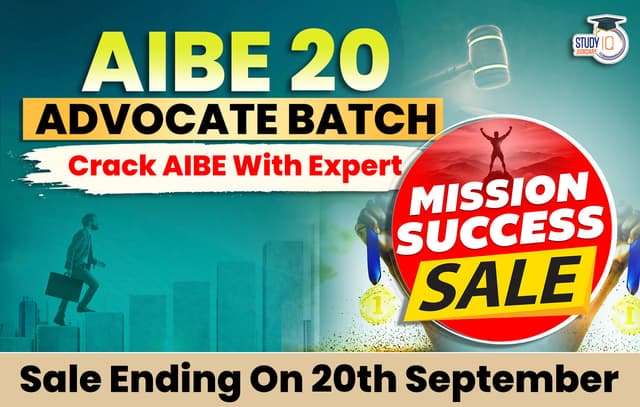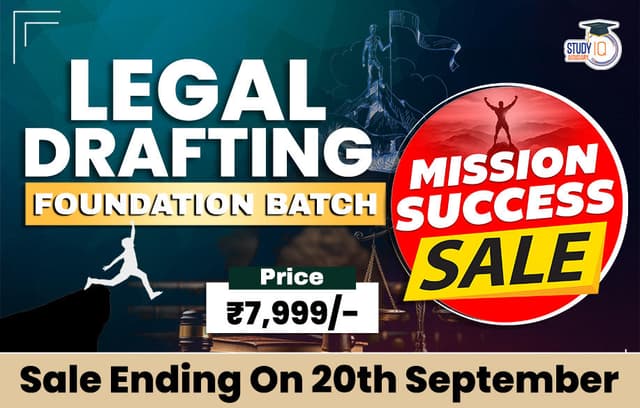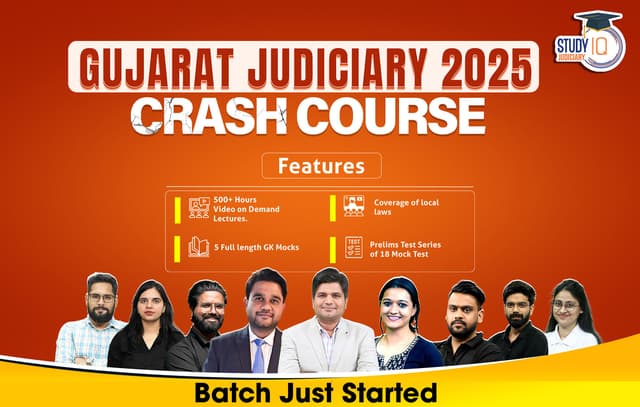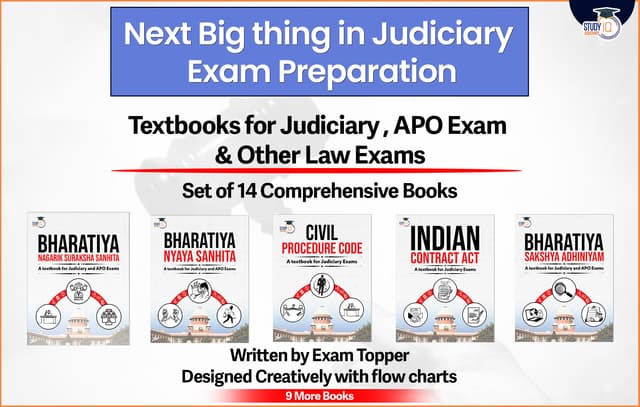The Gujarat Judicial Service (GJS) Prelims Exam 2025 was held successfully by the Gujarat High Court on June 29, 2025. It is an objective-type (MCQ-based) elimination test as the initial part of the selection process for Civil Judge posts, for which 212 vacancies were advertised.
The examination consisted of two papers: Paper 1 on Law (100 questions, 100 marks, 2 hours) dealing with a comprehensive array of criminal and civil laws, recent amendments to principal acts such as the IPC, CrPC, and Indian Evidence Act, and Paper 2, Test of Gujarati Language (50 questions, 50 marks, 30 minutes). A negative marking of 0.33 marks for every wrong answer existed on both papers, and the candidates had to achieve at least 50% of the overall marks to be eligible for the Mains exam. The question paper was presented in both English and Gujarati. Read this article to get the Gujarat Judiciary 2025 Solved Question Paper to evaluate your performance.
Gujarat Judiciary 2025 Solved Question Paper
Q 1. Section 112 of the Indian Evidence Act (Section 116 of Bhartiya Sakshya Adhiniyam, 2023) provides for the presumption regarding the Legitimacy of a child born within
(A) 240 days after the dissolution of marriage, the mother remaining unmarried
(B) 260 days after the dissolution of marriage, the mother remaining unmarried
(C) 280 days after the dissolution of marriage, the mother remaining unmarried
(D) 300 days after the dissolution of marriage, the mother remaining unmarried
Answer – c
Explanation– Refer Section 112 of Indian Evidence Act.
Q 2. As per section 89 of the Code of Civil Procedure, the court may refer the dispute to
(A) Arbitration
(B) Mediation
(C) Lok Adalat
(D) All of the above
Answer – d
Explanation– Refer Section 89 of Code of Civil Procedure
Q3. As per section 96 of the Code of Civil Procedure, an appeal is not maintainable against decree
(A) which is ex parte in nature
(B) which is consent decree
(C) which is preliminary decree and final decree is yet to be passed
(D) where value of subject matter of suit exceeds Ten thousand Rupees
Answer – b
Explanation– Section 96(3) of the Code of Civil Procedure, 1908 specifically states, “No appeal shall lie from a decree passed by the Court with the consent of parties.
Q4. Hon’ble Supreme Court in which of the following cases has held that daughter’s right to be a coparcener is retroactive?
(A) Shreya Vidyarthi V/s. Ashok Vidhyarthi
(B) Vineeta Sharma V/s. Rakesh Sharma & Anr.
(C) Vinny Parmvir Parmar V/s. Parmvir Parmar
(D) Gurupad V/s. Hira Bai
Answer – b
Q5. The requirement of pre-litigation mediation u/s. 12A of the Commercial Courts Act, 2015 is ……….. in nature.
(A) arbitrary
(B) directory
(C) mandatory
(D) None of the above
Answer – c
Explanation– Section 12A of the Commercial Courts Act, 2015, makes it mandatory for the parties to a commercial dispute to exhaust the remedy of pre-institution mediation before filing a suit, unless the suit contemplates any urgent interim relief. The Supreme Court in a few judgments has reinforced this mandatory nature, emphasizing that it’s a pre-requisite for filing a commercial suit.
Q 6. A contingent contract to do or not to do anything if an uncertain future event happens:
(A) becomes voidable when the event becomes impossible
(B) remains valid even if the event becomes impossible
(C) It is a contract void ab initio
(D) becomes void when the event becomes impossible
Answer – d
Explanation: This is based on Section 32 of the Indian Contract Act, 1872. A contingent contract is a contract to do or not to do something if some event, collateral to such contract, does or does not happen. If the future event on which the contract is contingent becomes impossible, the contract becomes void.
Q 7. What is the full form of UNESCO?
(A) United Nations Education, Science and Culture Organization
(B) United Nations Educational, Scientific and Cultural Organization
(C) United Nations Educational, Social and Culture Organization
(D) United Nations Economic, Social and Culture Organization
Answer – b
Explanation: UNESCO is a specialized agency of the United Nations (UN). Its full form is the United Nations Educational, Scientific and Cultural Organization.
Q8. Under which of the following sections of the Code of Criminal Procedure, 1973, the procedure for execution of a warrant forwarded outside jurisdiction is provided?
(A) Section 78
(B) Section 80
(C) Section 81
(D) Section 83
Answer – a
Explanation: Section 78 of the Code of Criminal Procedure, 1973 (CrPC) outlines the procedure for a court to forward a warrant for execution outside its local jurisdiction. The section specifies that the court can forward the warrant by post or deliver it to a police officer to be executed.
Q9. The principle of Res Judicata applies to:
(A) Suit
(B) Execution proceedings
(C) Bail Application
(D) Both (A) & (B)
Answer – d
Explanation: Section 11, Explanation 7 CPC.
Q 10. Which provision of the Indian Evidence Act provides for the admissibility of electronic records?
(A) Section 63
(B) Section 65B
(C) Section 66A
(D) Section 67A
Answer – b
Q 11. “Actus Dei Nemini Facit Injuriam” means:
(A) The crime carries the person
(B) An act of God does injury to no one
(C) A person can not be held responsible for act of another
(D) Impossible act
Answer – b
Explanation: This is a legal maxim in Latin. It means “the act of God causes injury to no one.”
Q 12. In which of the following mortgages, possession of property is delivered to the mortgagee?
(A) Simple mortgage
(B) Usufructuary mortgage
(C) Mortgage by deposit of title deeds
(D) None of the above
Answer – b
Explanation: In a usufructuary mortgage, the mortgagor delivers possession of the mortgaged property to the mortgagee.
Q 13. Specific relief can be granted for-
(A) enforcing individual civil rights
(B) enforcing penal laws
(C) both civil rights and penal laws
(D) neither civil rights nor penal laws
Answer – a
Explanation: The Specific Relief Act, 1963, deals with specific civil remedies for the enforcement of individual civil rights. It is not meant for enforcing penal laws.
Q14. Can a minor draw, endorse, deliver and negotiate instruments under the Negotiable Instruments Act, 1881?
(A) Yes so as to bind all parties including himself
(B) No
(C) Yes so as to bind all parties except himself
(D) None of the above
Answer – c
Explanation: As per the Negotiable Instruments Act, 1881, a minor can draw, endorse, deliver, and negotiate a negotiable instrument. However, the minor is not personally liable on the instrument. This means that while other parties to the instrument are bound by it, the minor is not.
Q 15. What does Section 4 of The Protection of Women from Domestic Violence Act, 2005 deal with?
(A) Penalty for domestic violence
(B) Information to Protection Officer and exclusion of liability of informant
(C) Procedure for obtaining protection orders
(D) Powers of the magistrate
Answer – b
Explanation: Section 4 of the Protection of Women from Domestic Violence Act, 2005, states that any person who has reason to believe that an act of domestic violence has been or is being committed can inform the Protection Officer.
Q 16. In a valid contract, what from the following, comes first?
(A) enforceability
(B) acceptance
(C) promise
(D) proposal
Answer – d
Explanation: The formation of a contract follows a sequence. It starts with a proposal (or offer) from one party. This is then followed by acceptance of the proposal by the other party. The accepted proposal then becomes a promise. This promise, if it is made with consideration and is legally enforceable, becomes a valid contract.
Q 17. Police Officer of which of the following rank can enter, search etc. a gaming-house?
(A) Constable
(B) Head Constable
(C) Assistant Sub-Inspector
(D) Sub-Inspector
Answer – d
Explanation: Section 6 of Bombay Prevention of Gambling Act 1887.
Q 18. What is meaning of ‘lex loci’?
(A) Law of the land
(B) Sovereignty is essential for enacting laws
(C) Law of the forum
(D) Crown has supreme authority
Answer – a
Explanation: ‘Lex Loci’ is a Latin term that translates to “law of the place.” In legal terms, it refers to the law of the country or jurisdiction where a particular event, transaction, or property is located.
Q 19. What cannot be transferred as per the Transfer of Property Act?
(A) Ownership of immovable property
(B) Ownership of movable property
(C) Mortgage of immovable property
(D) A mere right to sue
Answer – d
Explanation: Section 6 of the Transfer of Property Act, 1882, lists what may and may not be transferred. One of the items that cannot be transferred is “a mere right to sue.”
Q 20. The Company’s profits were low and they were forced to staff.
(A) lisp off
(B) lay off
(C) lay on
(D) rely of
Answer – b
Explanation: To “lay off” means to terminate the employment of a worker, especially temporarily, because there is not enough work. This fits the context of a company with low profits.
Q 21. Sec. 52 of the Transfer of Property Act, 1882, speaks about
(A) transfer lis pendente lite
(B) fraudulent transfer
(C) part-performance
(D) None of the above
Answer – a
Explanation: Section 52 of the Transfer of Property Act, 1882, deals with the doctrine of ‘Lis Pendens’, which means “a pending suit.”
Q 22. Who was the first female judge of the Supreme Court of India?
(A) Sujata Manohar
(B) Fathima Beevi
(C) Ruma Pal
(D) Ranjana Desai
Answer – b
Q 23. What is the penalty for tampering with computer source documents under the Information Technology Act, 2000?
(A) Imprisonment up to 3 years or fine or both
(B) Imprisonment up to 5 years or fine or both
(C) Imprisonment up to 7 years or fine or both
(D) Imprisonment for life
Answer – a
Explanation: Section 65 of the Information Technology Act, 2000, prescribes the punishment for tampering with computer source code. The penalty is imprisonment for a term that may extend to three years, or with a fine which may extend to two lakh rupees, or with both.
Q24. Where in a suit for specific performance of a contract, the plaintiff has not claimed compensation in the plaint, the court shall allow him to amend the plaint for including a claim for such compensation-
(A) not after the filing of the written statement
(B) not after the framing of the issues
(C) not after the completion of plaintiff’s evidence
(D) at any stage of the proceeding,
Answer – d
Explanation: As per Section 21(5) of the Specific Relief Act, 1963, if the plaintiff has not claimed compensation in the plaint, the court shall, at any stage of the proceeding, allow the plaintiff to amend the plaint on such terms as may be just, to include a claim for such compensation.
Q 25. Which of the following is not a void marriage under Hindu Marriage Act?
(A) Either party has a spouse living at the time of the marriage
(B) The parties are within the degrees of prohibited relationship
(C) The parties are sapindas of each other
(D) The bride was below eighteen years of age at the time of marriage
Answer – d
Explanation: A marriage where the bride is below 18 years of age is a voidable marriage, not a void marriage, under the Hindu Marriage Act, 1955. A void marriage is one that is considered invalid from the very beginning (ab initio), such as a bigamous marriage, or a marriage between parties in a prohibited relationship.
Q 26. Under which section of the Indian Evidence Act, a witness may be cross-examined to shake his credit?
(A) Section 140
(B) Section 142
(C) Section 144
(D) Section 146
Answer – d
Explanation: Section 146 of the Indian Evidence Act, 1872, allows for a witness to be cross-examined not just on relevant facts, but also to test their veracity, to discover who they are and their position in life, and to shake their creditby injuring their character.
Q 27. Which section of the Registration of Births and Deaths Act, 1969, deals with the compulsory registration of births and deaths?
(A) Section 8
(B) Section 14
(C) Section 16
(D) Section 21
Answer – a
Explanation: Section 8 of the Registration of Births and Deaths Act, 1969, makes it compulsory to register every birth and death that occurs within a specific jurisdiction.
Q 28. Which section of the Bhartiya Nyaya Sanhita, 2023 deals with offence of criminal breach of trust?
(A) Section 314
(B) Section 315
(C) Section 316
(D) Section 317
Answer – c
Explanation: In the new Bhartiya Nyaya Sanhita, 2023, the offense of criminal breach of trust, which was previously covered under Section 405 of the Indian Penal Code, is now defined under Section 316.
Q 29. Which section of the Hindu Succession Act, 1956 deals with the General rules of succession in the case of males?
(A) Section-6
(B) Section-7
(C) Section-8
(D) Section-9
Answer – c
Explanation: Section 8 of the Hindu Succession Act, 1956, provides the general rules of succession for the property of a Hindu male who dies intestate (without a will). It specifies the order of heirs who inherit the property.
Q30. A transfer of ownership in exchange for a price paid or promised or part-paid and part-promised is called
(A) exchange
(B) lease
(C) part-performance
(D) sale
Answer – d
Explanation: This is the definition of a sale as per Section 54 of the Transfer of Property Act, 1882, and Section 4 of the Sale of Goods Act, 1930. The key element is the transfer of ownership for a price.
Q 31. Part IV of the Constitution of India provides –
(A) Citizenship
(B) Fundamental Rights
(C) Fundamental Duties
(D) Directive Principles of State Policy
Answer – d
Explanation: The Constitution of India is divided into several parts. Part IV of the Constitution, from Article 36 to 51, deals with the Directive Principles of State Policy, which are guidelines for the state to follow in its governance.
Q 32. Where is the headquarter of NABARD?
(A) New Delhi
(B) Mumbai
(C) Ahmedabad
(D) Chennai
Answer – b
Explanation: The National Bank for Agriculture and Rural Development (NABARD) is a development bank. Its headquarters are located in Mumbai, Maharashtra.
Q33. A, by putting X in fear of grievous hurt, dishonestly induces X to sign or affix his seal to a blank paper and deliver it to A. X signs and delivers the paper to A. Which offence A has committed
(A) Theft
(B) Extortion
(C) Robbery
(D) Snatching
Answer – b
Explanation: As per the Indian Penal Code, extortion is committed when a person intentionally puts another person in fear of injury and dishonestly induces that person to deliver any property or valuable security. In this case, A is putting X in fear of grievous hurt to induce him to sign a blank paper, which can be converted into a valuable security.
Q 34. Under The Protection of Women from Domestic Violence Act, 2005, who can file a’ complaint of domestic violence?
(A) Only married women
(B) Only unmarried women
(C) Any woman who is in a domestic relationship
(D) Only women with children
Answer – c
Explanation: The Protection of Women from Domestic Violence Act, 2005, is not limited to married women. A complaint can be filed by any woman who has been in a domestic relationship with the respondent, which includes not just a married woman but also women in live-in relationships, sisters, mothers, etc.
Q35. Under which section of The Probation of Offenders Act, 1958, can a person be released on probation of good conduct?
(A) Section 3
(B) Section 4
(C) Section 5
(D) Section 6
Answer – b
Explanation: Section 4 of the Probation of Offenders Act, 1958, is the main provision that empowers the court to release a person on probation of good conduct. It allows the court to direct the offender to be released on a bond instead of sentencing them to imprisonment, considering the circumstances of the case and the nature of the offense.
Q 36. What does Section 15 of The Juvenile Justice Act, 2015, deal with?
(A) Preliminary assessment into heinous offences by Board
(B) Adoption of children
(C) Constitution of Juvenile Justice Board
(D) Child welfare Committee
Answer – a
Explanation: Section 15 of the Juvenile Justice (Care and Protection of Children) Act, 2015, mandates a preliminary assessment by the Juvenile Justice Board to determine whether a child aged between 16 and 18, who has committed a heinous offense, should be tried as an adult.
Q 37. Which section of The Information Technology Act, 2000, deals with the punishment for identity theft?
(A) Section 66B
(B) Section 66C
(C) Section 66D
(D) Section 66E
Answer – b
Explanation: Section 66C of the Information Technology Act, 2000, specifically deals with the offense of identity theft, which involves fraudulently or dishonestly using a person’s electronic signature, password, or any other unique identification feature.
Q 38. What does Section 18 of The Protection of Women from Domestic Violence Act, 2005, specify?
(A) Power to grant residence orders
(B) Penalty for breaching protection orders
(C) Procedure for counseling
(D) Powers to pass protection orders
Answer – d
Explanation: Section 18 of the Protection of Women from Domestic Violence Act, 2005, empowers the Magistrate to pass protection orders in favor of the aggrieved person. These orders can prohibit the respondent from committing domestic violence, communicating with the aggrieved person, entering their workplace, etc.
Q39. An agreement in restraint of trade is _
(A) valid
(B) voidable
(C) void
(D) unenforceable
Answer – c
Explanation: As per Section 27 of the Indian Contract Act, 1872, every agreement by which anyone is restrained from exercising a lawful profession, trade, or business of any kind is to that extent void. There are some exceptions, but the general rule is that such agreements are not legally enforceable.
Q 40. The government can also present its case
(A) with
(B) through
(C) by
(D) None of the above
Answer – b
Q 41. Under which section of the Juvenile Justice Act, 2015 is the definition of a “child in conflict with the law” provided?
(A) Section 2(12)
(B) Section 2(13)
(C) Section 2(14)
(D) Section 2(15)
Answer – b
Explanation: Section 2(13) of the Juvenile Justice (Care and Protection of Children) Act, 2015, defines a “child in conflict with law” as a child who is alleged to have committed an offense and has not completed eighteen years of age on the date of commission of such offense.
Q 42. If UNDERSTAND is coded as 1234567823, how will START be coded ?
(A) 67857
(B) 83243
(C) 56781
(D) 73652
Answer – a
Explanation: Let’s break down the code:
- U -> 1
- N -> 2
- D -> 3
- E -> 4
- R -> 5
- S -> 6
- T -> 7
- A -> 8
- N -> 2
- D -> 3 Now, let’s code START:
- S -> 6
- T -> 7
- A -> 8
- R -> 5
- T -> 7 So, START is coded as 67857.
Q43. What is the punishment for giving false information under Section 217 of the Bhartiya Nyaya Sanhita, 2023?
(A) Imprisonment for a term upto 6 months, or fine, or both
(B) Imprisonment for a term upto 1 year, or fine, or both
(C) Imprisonment for a term upto 2 years, or fine, or both
(D) Imprisonment for a term upto 3 years, or fine, or both
Answer – b
Explanation: Under the new Bharatiya Nyaya Sanhita, 2023, the punishment for giving false information to a public servant is a term of imprisonment of up to one year, or a fine, or both. This provision corresponds to Section 182 of the Indian Penal Code.
Q 44. Which of these is an example of cloud computing service?
(A) Google Drive
(B) Internet Explorer
(C) Notepad
(D) Calculator
Answer – a
Explanation: Google Drive is a perfect example of a cloud computing service. It allows users to store files and data on remote servers (the “cloud”) and access them from anywhere with an internet connection. The other options are not cloud-based services: Internet Explorer is a web browser, and Notepad and Calculator are local applications on a computer.
Q 45. When substituted service of summons can be claimed?
(A) Defendant is keeping away to avoid service of summons
(B) Summons can not be served in ordinary way
(C) Both (A) & (B)
(D) None of the above
Answer – c
Explanation: Substituted service of summons, as per Order 5 Rule 20 of the Code of Civil Procedure, is allowed when the court is satisfied that the defendant is keeping away from service to avoid being served or that for any other reason the summons cannot be served in the ordinary way.
Q 46. What does Section 3 of the Indian Evidence Act, 1872 deal with?
(A) Burden of proof
(B) Relevancy of facts
(C) Interpretation clause
(D) Admissions
Answer – c
Explanation: Section 3 of the Indian Evidence Act, 1872, is the Interpretation clause.
Q 47. A woman married under Muslim Law is entitled to obtain a decree for the dissolution of her marriage if the whereabout of her husband have not been known for a period of ……
(A) 2 years
(B) 3 years
(C) 4 years
(D) 7 years
Answer – c
Explanation: Under the Dissolution of Muslim Marriages Act, 1939, a Muslim woman can seek a dissolution of her marriage if the whereabouts of her husband have not been known for a period of four years.
Q 48. Provision of Closure of Defence and passing of Judgement in case of failure to present written statement within the time permitted or fixed by the Court, is provided in
(A) Order 8 Rule 2 of CPC
(B) Order 8 Rule 8 of CPC
(C) Order 8 Rule 10 of CPC
(D) Order 9 Rule 7 of CPC
Answer – c
Explanation: Order 8 Rule 10 of the Code of Civil Procedure, 1908, gives the court the power to pronounce judgment against a defendant who fails to file a written statement within the time prescribed by the court. The court can also make such other orders as it deems fit in such a case.
Q 49. What does Section 154 of the Code of Criminal Procedure code, 1973 (Section 173 of Bhartiya Nagarik Suraksha Sanhita, 2023) deal with?
(A) Arrest without a warrant
(B) Information relating to commission of a cognizable offence
(C) Power 10 grant bail
(D) Powers of the magistrate
Answer – b
Explanation: Section 154 of the CrPC deals with the recording of a First Information Report (FIR). It states that any information relating to the commission of a cognizable offence given to an officer in charge of a police station shall be reduced to writing and read over to the informant.
Q 50. What does Section 164 of the Code of Criminal Procedure, 1973 (Section 183 of Bhartiya Nagarik Suraksha Sanhita, 2023) deal with?
(A) Recording of confessions and statements
(B) Arrest without a warrant
(C) Procedure for conducting trials
(D) Bail
Answer – a
Explanation: Section 164 of the CrPC empowers a Magistrate to record any confession or statement made in the course of an investigation. A confession recorded under this section is a crucial piece of evidence in a criminal trial.
Q 51. Match List-I with List-Il and select the correct answer using the codes given below the Lists:
List-I
A. Habeas Corpus
B. Mandamus
C. Qua Warranto
D. Certiorari
List-II
1. Violation of natural justice
2. Unlawful arrest and detention
3. Exercise of power without jurisdiction
4. Non-performance of public duty
(A) A-1: B-4: C-3: D-2
(B) A-1: B-3 : C-4: D-2
(C) A-2: B-3: C-4: D-1
(D) A-2: B-4: C-3: D-1
Answer – d
Q 52. Doccine of adverse possession has been evolved as per mandate of
(A) Section 27 of Limitation Act
(B) Section 29 of Limitation Act
(C) Section 53A of Transfer of Property Act
(D) Section 25 of Limitation Act
Answer – a
Explanation: The doctrine of adverse possession is governed by the Limitation Act, 1963. Section 27 of the Act deals with the extinguishment of the right to property, and it is this provision, along with other articles of the Act, that provides the legal basis for the doctrine of adverse possession.
Q 53. What does Section 136 of the Indian Evidence Act (Section 141 of Bhartiya Sakshya Adhiniyam, 2023) deal with?
(A) Judge to decide as to admissibility of evidence
(B) Cross-examination of a witness
(C) Re-examination of a witness
(D) Leading questions
Answer – a
Explanation: Section 136 of the Indian Evidence Act, 1872, gives the Judge the power to decide on the admissibility of evidence.
Q 54. Article 19(1)(a) of the Constitution of India guarantees freedom of speech and expression to
(A) all citizens of India
(B) all Indians and foreigners
(C) only persons above 21 years of age
(D) only persons who have attained 60 years of age
Answer – a
Explanation: Article 19(1)(a) of the Indian Constitution is a fundamental right that guarantees the right to freedom of speech and expression. This right is available exclusively to citizens of India.
Q 55. X shoots an arrow targeting the left eye of Y, which hits the right eye of Y, due to which Y loses the vision of his right eye. X has committed an offence punishable under section of the Indian Penal Code.
(A) 324
(B) 326
(C) 325
(D) 326 A
Answer – b
Explanation: The act of causing grievous hurt by a dangerous weapon (like an arrow) is an offense under Section 326 of the Indian Penal Code. The loss of sight of an eye is specifically defined as “grievous hurt” under Section 320 of the IPC.
Q56. The statement made under Section 161 of the Code of Criminal Procedure, 1973 (Section 180 of Bhartiya Nagarik Suraksha Sanhita, 2023) before the Police Officer …
(A) need not be reduced into writing by the Police Officer
(B) needs to be signed by the person making the statement
(C) need not be signed by the person making the statement
(D) None of the above
Answer – c
Explanation: Section 162 of the CrPC specifically states that a statement recorded by a police officer under Section 161 shall not be signed by the person making it.
Q 57. International Court of Justice is located at
(A) The Hague, Netherlands
(B) New York, U.S.A.
(C) Washington D.C., U.S.A.
(D) Geneva, Switzerland
Answer – a
Explanation: The International Court of Justice (ICJ), the principal judicial organ of the United Nations, is located in the Peace Palace in The Hague, Netherlands.
Q 58. The concept of ‘abetment’ is defined under which of the following sections of the Indian Penal Code?
(A) Section 107
(B) Section 109
(C) Section 111
(D) Section 113
Answer – a
Explanation: Section 107 of the Indian Penal Code defines “abetment of a thing.” It explains how a person can be an abettor, such as by instigating, engaging in a conspiracy, or intentionally aiding in the commission of an offense.
Q 59. The reserve fund is –
(A) invested
(B) lend
(C) advanced
(D) devoted
Answer – a
Explanation: A reserve fund is a portion of a company’s earnings that is set aside for future use or to meet contingencies. This fund is typically invested to generate returns, which helps the fund grow over time and provides a source of liquidity when needed.
Q60. If a cheque is returned with an endorsement “Refer to Drawer” does it attract penal provisions under the Negotiable Instruments Act, 1881?
(A) Yes
(B) No
(C) It attracts provisions of Indian Penal Code
(D) None of the above
Answer – b
Explanation: The endorsement “Refer to Drawer” is not one of the statutory grounds for attracting penal provisions under Section 138 of the Negotiable Instruments Act, 1881. Section 138 is attracted when the cheque is returned due to “insufficient funds” or when the amount exceeds the arrangement with the bank.
Q 61. The presumption under section 139 of the Negotiable Instruments Act is in favour of
(A) drawer of cheque
(B) drawee of cheque
(C) holder of cheque
(D) None of the above
Answer – c
Explanation: Section 139 of the Negotiable Instruments Act, 1881, creates a legal presumption that unless the contrary is proved, the holder of a cheque received the cheque for the discharge, in whole or in part, of any debt or other liability. This presumption is a key element in cheque bouncing cases.
Q 62. Next number in series 4,9,20,43….
(A) 90
(B) 96
(C) 85
(D) 95
Answer – a
Explanation: Let’s look at the pattern:
- 4 x 2 + 1 = 9
- 9 x 2 + 2 = 20
- 20 x 2 + 3 = 43
- 43 x 2 + 4 = 86 + 4 = 90 The pattern is (previous number x 2) + (the next consecutive integer starting from 1).
Q 63. What does Section 167 of the Code of Criminal Procedure, 1973 (Section 187 of Bhartiya Nagarik Suraksha Sanhita, 2023) deal with?
(A) Bail in non-bailable cases
(B) Power of the police to release on bail
(C) Remand of an accused in police or judicial custody by the magistrate
(D) Execution of a warrant
Answer – c
Explanation: Section 167 of the CrPC is a very important provision that deals with the procedure when an investigation cannot be completed within 24 hours. It allows the Magistrate to authorize the detention of the accused in police or judicial custody, commonly known as remand.
Q 64. What does Section 8 of the Indian Evidence Act (Section 6 of Bhartiya Sakshya Adhiniyam, 2023) deal with?
(A) Estoppel
(B) Admission
(C) Confession
(D) Motive, preparation and previous or subsequent conduct
Answer – d
Explanation: Section 8 of the Indian Evidence Act makes facts that show motive, preparation, or subsequent or previous conduct relevant. It states that any fact is relevant which shows or constitutes a motive or preparation for any fact in issue or relevant fact.
65. Which section of The Information Technology Act, 2000, is declared as ultra vires by the Supreme Court in the judgement of Shreya Singhal V/s. Union of India?
(A) 66
(B) 67
(C) 66-A
(D) 67-A
Answer – c
Explanation: In the landmark judgment of Shreya Singhal v. Union of India (2015), the Supreme Court declared Section 66A of the Information Technology Act, 2000, as unconstitutional and ultra vires.
Q 66. Under which section of The Immoral Traffic (Prevention) Act, 1956, is the definition of “prostitution” provided?
(A) Section 2(f)
(B) Section 2(c)
(C) Section 2(d)
(D) Section 2(e)
Answer – a
Explanation: Section 2(f) of The Immoral Traffic (Prevention) Act, 1956, defines “prostitution” as the act of a female offering her body for promiscuous sexual intercourse for hire, whether in money or in kind.
Q 67. Under the Probation of Offenders Act, 1958, what is the procedure for releasing an offender on probation?
(A) An offender has to apply for probation
(B) An offender has to serve a minimum sentence before being considered for
probation
C) Court may release the offender on probation after considering the case
(D) None of the above
Answer – c
Explanation: The Probation of Offenders Act, 1958, empowers the court to release an offender on probation. This is a discretionary power exercised by the court after considering the report from the probation officer, the character of the offender, the circumstances of the offense, and whether it’s in the interest of justice.
Q 68. As per the Bharatiya Nagarik Suraksha Sanhita, the maximum amount of fine imposed by the Court of a Magistrate of the First Class shall not exceed:
(A) Rs. 10000
(B) Rs. 25000
(C) Rs. 50000
(D) Rs. 100000
Answer – c
Explanation: Under the new Bharatiya Nagarik Suraksha Sanhita, the fine that can be imposed by a Magistrate of the First Class has been increased. The maximum fine is now Rs. 50,000.
Q 69. Which of these acts define the expression ‘penetrative sexual assault’?
(A) Indian Penal Code, 1860
(B) The Immoral Traffic (Prevention) Act, 1956
(C) The Indecent Representation of Woman (Prohibition) Act, 1986
(D) The Protection of Children from Sexual offences Act, 2012
Answer – d
Explanation: The term ‘penetrative sexual assault’ is a key term defined under Section 3 of The Protection of Children from Sexual Offences Act, 2012 (POCSO Act).
Q 70. No suit under section 6 of the Specific Relief Act, 1963 shall be brought after the expiry of ………. from the date of dispossession.
(A) one month
(B) two months
(C) three months
(D) six months
Answer – d
Explanation: Section 6 of the Specific Relief Act, 1963, deals with the suit for recovery of possession of immovable property. It provides that such a suit cannot be filed after the expiry of six months from the date of dispossession.
Q71. Which of the following sections of the Arbitration and Conciliation Act, 1996 clearly postulates that the judicial authority before which an action was brought in the matter was competent to refer the parties to arbitration?
(A) Section 6
(B) Section 7
(C) Section 8
(D) Section 9
Answer – c
Explanation: Section 8 of the Arbitration and Conciliation Act, 1996, is a key provision that states that a judicial authority before which a matter is brought, and which is the subject of an arbitration agreement, shall refer the parties to arbitration, unless it finds that the arbitration agreement is null and void. This makes it mandatory for the court to refer the parties to arbitration if a valid arbitration agreement exists.
Q 72. Actionable claim means:
(A) A claim to any debt secured by mortgage of immovable property
(B) A claim to any debt secured by pledge of movable property
(C) A claim to any debt secured by hypothication of movable property
(D) None of the above
Answer – d
Explanation: An actionable claim is defined in Section 3 of the Transfer of Property Act, 1882. It means a claim to any debt, other than a debt secured by a mortgage of immovable property or by hypothecation or pledge of movable property, or to any beneficial interest in movable property not in the possession of the claimant, which the Civil Courts recognize as affording grounds for relief.
Q 73. The provisions regarding “Interim measures” ordered by Court are found in which of these section of the Arbitration and Conciliation Act, 1996?
(A) Section 16
(B) Section 17
(C) Section 9
(D) Section 34
Answer – c
Explanation: Section 9 of the Arbitration and Conciliation Act, 1996, allows a party to approach the court for interim measures of protection before or during arbitral proceedings, or even after the arbitral award is made but before it is enforced.
Q 74. Under what circumstances does provision of Section 27 of the Indian Evidence Act apply?
(A) When the person giving information is an accused and is in police custody.
(B) When the person is neither in police custody nor an accused
(C) When the person giving information is an accused but not in police custody.
(D) When the person giving information is in police custody but not an accused.
Answer – a
Explanation: Section 27 of the Indian Evidence Act is a proviso to Sections 25 and 26. It allows for the admissibility of a confession, even if it was made in police custody, if it leads to the discovery of a fact. This provision is only applicable when the person giving the information is an accused and is in the custody of a police officer.
Q 75. Which one of the following is not a Fundamental Right under the Constitution of India?
(A) Right to assemble peacefully
(B) Right to property
(C) Right to move freely throughout the country
(D) All of the above
Answer – b
Explanation: The Right to Property was originally a Fundamental Right under Article 31 of the Constitution. However, it was removed from the list of Fundamental Rights by the 44th Amendment Act, 1978, and was made a constitutional right under Article 300A.
Q 76. Where in the Sale of Goods Act, 1930, any reference is made to a reasonable time, the question of what is a reasonable time is ….
(A) a period of one year
(B) a period of six months
(C) a period of 30 days
(D) a question of fact
Answer – d
Explanation: Section 63 of the Sale of Goods Act, 1930, states that when the Act refers to a “reasonable time,” what constitutes a reasonable time is a question of fact. This means that it has to be determined based on the specific circumstances and facts of each individual case, not by a fixed rule.
Q77. Under which section of the Code of Criminal Procedure, 1973, can a magistrate issue a search warrant for persons wrongfully confined?
(A) Section 94
(B) Secton 95
(C) Section 96
(D) Section 97
Answer – d
Explanation: Section 97 of the Code of Criminal Procedure empowers a District Magistrate, Sub-divisional Magistrate, or a Magistrate of the First Class to issue a search warrant for a person who is wrongfully confined. The warrant can be used to search for the person and produce them before the court.
Q 78: What does RAM stand for?
(A) Read Access Memory
(B) Random Access Memory
(C) Real Application Memory
(D) Remote Access Memory
Answer – b
Explanation: RAM is an acronym for Random Access Memory. It is a type of computer memory that can be accessed randomly, allowing a computer to access any byte of memory directly. It’s used for short-term data storage while the computer is running.
Q 79. Section-5 of the Limitation act does not apply to:
(A) Suits
(B) Appeal
(C) Revision
(D) None of the above
Answer – a
Explanation: Section 5 of the Limitation Act, 1963, provides for the extension of the prescribed period of limitation in certain cases where the applicant can show “sufficient cause” for the delay. However, the explanation to the section itself specifies that this provision does not apply to suits. It only applies to appeals and applications.
Q80. Any man who monitors the use by a woman of the internet, e-mail or any other form of electronic communication, commits under Bhartiya Nyaya Sanhita, 2023 the offence of
(A) Sexual harassment
(B) Voyeurism
(C) Stalking
(D) None of the above
Answer – c
Explanation: Under the new Bharatiya Nyaya Sanhita, 2023, the offense of stalking has been defined. It includes monitoring a woman’s use of electronic communication, such as the internet or email, which is a form of unwanted contact and surveillance.
Q 81. The doctrine of ‘double jeopardy’ in Article 20(2) of the Constitution of India means
(A) one can be prosecuted several times for the same offence
(B) no one can be prosecuted and punished more than once for the same offence
(C) no person accused of any offence can be compelled to be a witness against
himself
(D) one can be prosecuted more than once but punished only once
Answer – b
Explanation: Article 20(2) of the Indian Constitution enshrines the doctrine of ‘double jeopardy’ or ‘Nemo debet bis vexari pro una et eadem causa’ (no person should be vexed twice for the same cause). It states that no person shall be prosecuted and punished for the same offense more than once.
Q 82. In the famous case of Keshvananda Bharti v. State of Kerala, the Hon’ble Supreme Court:
(A) held that the Fundamental Rights cannot be amended
(B) upheld the unlimited power of the Parliament to amend the Constitution to
any extent.
(C) established the Basic Structure doctrine, limiting the Parliament’s power to
amend the Constitution.
(D) declared that the Preamble is not a part of the Constitution.
Answer – c
Explanation: The case of Kesavananda Bharati v. State of Kerala (1973) is a landmark judgment in Indian constitutional history. In this case, the Supreme Court, while upholding the Parliament’s power to amend the Constitution, held that this power is not unlimited. It introduced the “Basic Structure” doctrine, stating that certain core features of the Constitution, such as the supremacy of the Constitution, secularism, and the democratic republic, cannot be amended by the Parliament.
Q 83. Under section 81 of Gujarat Prohibition Act, penalty for abetment is?
(A) Same as for the principle offence
(B) Imprisonment of up to 2 years and fine
(C) Imprisonment of up to 10 years or fine
(D) Imprisonment of up to 5 years or fine
Answer – a
Explanation: Section 81 of the Gujarat Prohibition Act states that a person who abets or attempts to commit any offense under the Act will be punished with the same punishment as is provided for the principal offense.
Q 84. Which of the following provisions of the Code of Civil Procedure deals with restoration of suit?
(A) Order-6
(B) Order-8
(C) Order-9
(D) Section-148
Answer – c
Explanation: Order 9 of the Code of Civil Procedure deals with the appearance of parties and the consequences of non-appearance. Rule 9 of this order specifically provides for the restoration of a suit that was dismissed due to the plaintiff’s default in appearance.
Q 85. Which one of the following statements does not come under the definition of ‘Complaint’ under Section 2(d) of the Criminal Procedure Code, 1973 [Section 2(h) of Bhartiya Nagarik Suraksha Sanhita, 2023]?
(A) Complaint is an oral or a written allegation
(B) It is to be made only to the magistrate
(C) It is related to some person known or unknown who has committed an offence
(D) Police report made after investigation which discloses the commission of a
cognizable offence
Answer – d
Explanation: Section 2(d) of the CrPC defines a ‘complaint’ as an oral or written allegation made to a Magistrate, with a view to his taking action, that some person, whether known or unknown, has committed an offense. It explicitly excludes a police report. A police report, which is made after an investigation of a cognizable offense, is the basis for a police case, not a complaint case.
Q 86. Under the Indian Partnership Act, 1932, “business” includes
(A) every trade
(B) profession
(C) occupation
(D) All of the above
Answer – d
Explanation: Section 2(b) of the Indian Partnership Act, 1932, defines “business” broadly to include every trade, occupation, and profession.
Q 87. Agency gets terminated upon death of Principal or Agent except where –
(A) it is an agency coupled with interest
(B) agent is related with the Principal
(C) agent is residing outside India
(D) Both (B) & (C)
Answer – a
Explanation: Generally, an agency is terminated upon the death of either the principal or the agent. However, an exception to this is an “agency coupled with interest.” In such a case, the agent has an interest in the subject matter of the agency, and the agency is not terminated by the death, insanity, or bankruptcy of the principal.
Q 88. A lease of immovable property determines..
(A) by efflux of time limited thereby
(B) by Implied surrender
(C) by forfeiture
(D) All of the above
Answer – d
Explanation: As per Section 111 of the Transfer of Property Act, 1882, a lease of immovable property can be determined (terminated) in various ways, including:
- by efflux of time: when the lease period expires
- by implied surrender: when the lessee accepts a new lease, which implies the surrender of the old one
- by forfeiture: when the lessee breaches a condition of the lease, or denies the lessor’s title, and the lessor gives notice of forfeiture
Q 89. Under section 25 of the Hindu Marriage Act, any court exercising jurisdiction under the Act may pass order granting permanent alimony in favour of…
(A) wife only
(B) husband only
(C) either the husband or the wife
(D) children of parties
Answer – c
Explanation: Section 25 of the Hindu Marriage Act, 1955, provides for permanent alimony and maintenance. The provision is gender-neutral and allows the court to grant maintenance and alimony in favor of either the wife or the husband, provided the applicant has no independent source of income and the other party has the means to provide support.
Q90. What does Section 113-B of the Indian Evidence Act (Section 118 of Bhartiya Sakshya Adhiniyam, 2023) deal with?
(A) Presumption as to abetment of suicide
(B) Presumption as to dowry death
(C) Presumption as to absence of consent in certain prosecutions of rape
(D) Presumption as to absence of consent in certain prosecutions for kidnapping
Answer – b
Explanation: Section 113-B of the Indian Evidence Act, 1872, deals with the presumption as to dowry death. It states that if a woman dies within seven years of her marriage and it is shown that she was subjected to cruelty or harassment in connection with a demand for dowry, the court shall presume that her husband or relatives caused her death.
Q 91. What is a blockchain used for?
(A) Digital Transactions
(B) File compression
(C) Running software
(D) Sending emails
Answer – a
Explanation: A blockchain is a decentralized, distributed, and immutable digital ledger. It is primarily used for recording digital transactions in a secure and transparent manner. It’s the underlying technology behind cryptocurrencies like Bitcoin.
Q 92. Synonym of Alleviate
(A) Relieve
(B) Aggravate
(C) Distribute
(D) Congregate
Answer – a
Explanation: The word “alleviate” means to make suffering, a problem, or a difficulty less severe. The synonym among the options is “relieve,” which has a similar meaning of easing or lessening pain or distress.
Q93. Antonym of Destitute
(A) Penurious
(B) Depressed
(C) Indigent
(D) Prosperous
Answer – d
Explanation: “Destitute” means a person without the means to live, lacking food, shelter, and money. The antonym, or opposite, is “prosperous,” which means successful in material terms; flourishing financially.
Q94. What is the provision under Section 188 of the Code of Criminal Procedure, 1973 (Section 208 of Bhartiya Nagarik Suraksha Sanhita, 2023) for?
(A) Offence committed outside India
(B) Procedure for arrest
(C) Custodial interrogation
(D) All of the above
Answer – a
Explanation: Section 188 of the CrPC deals with the jurisdiction of Indian courts for offenses committed outside India. It provides that if a person who is a citizen of India commits an offense outside India, they can be dealt with in any place in India where they may be found, as if the offense had been committed there.
Q95. What is the name of the portal recently launched by the Ministry of Ayush to boost consumer protection and regulation in traditional medicine?
(A) National Health Portal
(B) Ayush Suraksha Portal
(C) FollowMyHealth Portal
(D) None of the above
Answer – b
Explanation: The Ministry of Ayush has launched the Ayush Suraksha Portal to help consumers verify the authenticity of Ayush products and services and to report complaints related to advertisements and products.
Q96. Which of the following is correctly spelt:
(A) Agreggate
(B) Aggregate
(C) Aggregatte
(D) Agregaet
Answer – b
Explanation: The correct spelling is “Aggregate.” It means a whole formed by combining several separate elements.
Q97. The trial of an offence punishable under Section 138 of the Negotiable Instruments Act has to be _____ trial.
(A) Summons
(B) Warrant
(C) Sessions
(D) Summary
Answer – d
Explanation: The trial of an offense under Section 138 of the Negotiable Instruments Act, 1881, for the dishonor of a cheque is a summary trial.
Q 98. Who is the drawer in the case of a bill of exchange?
(A) The person who makes the bill
(B) The person to whom the bill is made payable
(C) The person who endorses the bill
(D) The person who presents the bill for payment
Answer – a
Explanation: In a bill of exchange, there are three parties:
- Drawer: The person who makes or draws the bill and orders the drawee to pay a certain sum of money.
- Drawee: The person who is directed to pay the money.
- Payee: The person to whom the money is to be paid.
Q 99. Under the Juvenile Justice (Care and Protection of Children) Act, 2015 “henious offences” includes the offences for which the minimum punishment under the Indian Penal Code (45 of 1860) or any other law for the time being in
force is —
(A) Imprisonment for five years or more
(B) Imprisonment for seven years of more
(C) Capital punishment or imprisonment for life
(D) Imprisonment for ten years or more
Answer – b
Explanation: The Juvenile Justice (Care and Protection of Children) Act, 2015, classifies offenses into three categories: petty, serious, and heinous. A “heinous offense” is defined as an offense for which the minimum punishment is imprisonment for seven years or more.
Section 2(33) defines heinous offences.
Q 100. Under which section of the Code of Criminal Procedure, 1973 is the procedure for the investigation of non-cognizable cases defined?
(A) Section 154
(B) Section 155
(C) Section 156
(D) Section 157
Answer – b
Explanation: Section 155 of the Code of Criminal Procedure, 1973, deals with information and investigation in non-cognizable cases. It states that a police officer cannot investigate a non-cognizable case without the order of a Magistrate.

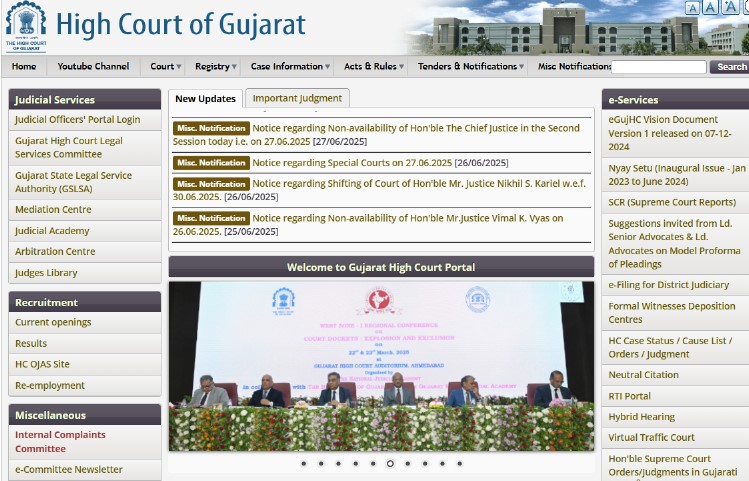
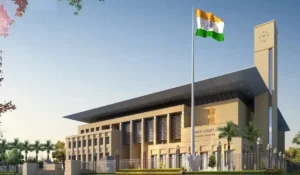 AP High Court Results 2025 – Expected ...
AP High Court Results 2025 – Expected ...
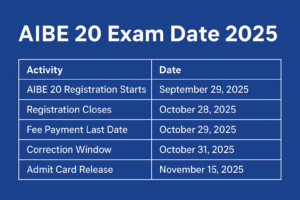 AIBE 20 Exam Date 2025 Announced at alli...
AIBE 20 Exam Date 2025 Announced at alli...
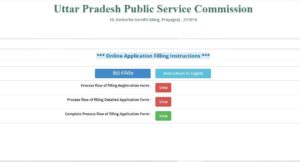 UPPSC APO Application Form 2025: Apply O...
UPPSC APO Application Form 2025: Apply O...
